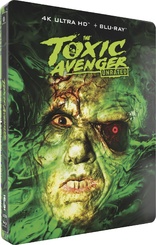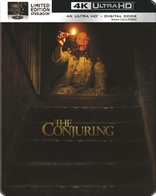
Reyz,
Gotta go with the above comments.
There are no Deep Color specified Blu-ray releases, and calibration is the best way to improve your PQ.
If you watch your BDs with "Dynamic" or "Vivid" factory picture settings, then although you will see bolder colors, the TV is likely "crushing" black detail as well as white detail. Dialing back the contrast (as well as brightness) is a good way to begin improving your PQ on your own. Also, reducing sharpness is another good way to improve PQ. Oversharpened video will bring out "ringing" visual artifacts, which lower overall image quality. Turn your sharpness down considerably (say, 15 to 30 on a 100 scale), and you will see natural transitions between image colors and details.
Turn off all video noise reduction as well. Although it can clean up a picture, it sometimes adds artifacts and/or can create an unnatural look.
I know you have a plasma, but for LCD TV owners:
If you are an LCD TV owner with a 120Hz refresh rate TV, turn off the "frame interpolation" feature off for maximum PQ. The interpolated frames, though sweet for motion-smoothing, often cause visible motion artifacting, additional moire, degradation of image detail (interpolated frames are not as faithful as the surrounding native frames), and the (loved and hated) "soap opera effect" (movies like "live video"). 120Hz LCD owners searching for the best PQ will find it using settings to ensure 5:5 pulldown for 24p Blu-ray movies (more accurate motion than a "doubled" 3:2 pulldown scheme). The improvement in PQ may make you forget about motion-smoothing all together!
Other controls, such as the 6 white balance settings, and "service menu" tweaks, should be left to someone with experience, especially thte latter. If you wish to try suggested picture settings for your model that sites like tweakmytv.com offer, make sure you can revert to factory picture settings, or at least write all your factory picture settings down first. Keep in mind that accessing your TV's embedded service menu settings is risky for the unexperienced in that you may not be able to undo any changes made.
Professional video calibration, though a bit costly (around $300) will offer you the most accurate color reproduction and maximum image detail.
Just so you know, most receivers will pass HDMI-carried 1080p video through untouched to the TV. Current Pioneer receivers, all the way through the Elite line, do this - a fact I like very much.
For what it's worth, I have a Sony BDP-S350 player, Sony KDL-40XBR4 TV (personally adjusted and calibrated), Pioneer Elite SC-05 receiver, and Polk Audio speakers all the way around (see my home theater gallery for all the details). All HDMI interconnected. I'm thrilled with the picture and sound that my system produces - absolutely happy with everything, except that I would like to upgrade to a larger TV and center channel speaker sometime. Not chomping at the bit to do it now, though.
|























 Linear Mode
Linear Mode

